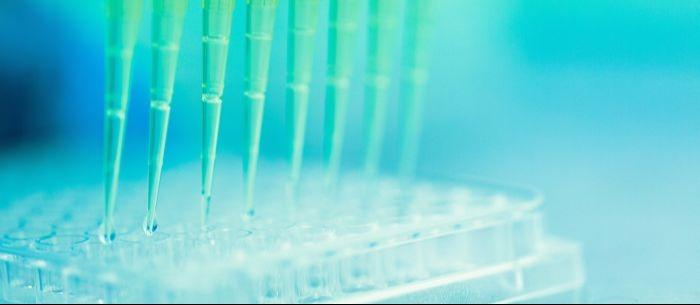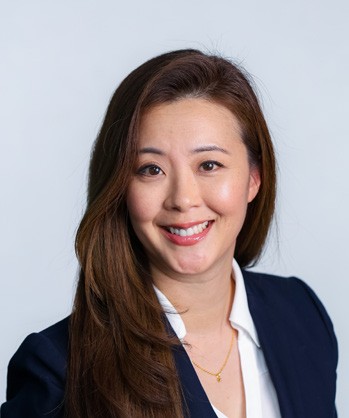Manufacturing: Cell Line Development
Clone selection as a strategic lever: balancing speed, quality and long-term viability in CLD
In biologics development, clone selection is not just a technical milestone, it’s a strategic decision with far-reaching clinical and commercial implications. How can thoughtful clone selection – integrated with developability and manufacturability assessments – accelerate speed to clinic while safeguarding long-term success?
Minni Ashwath and Joyce Lee at Bionova Scientific
In biologics development, few decisions carry as much long-term weight as clone selection. Often viewed as a technical task (one of many in a well-established pipeline), it is a strategic inflection point that can shape a therapy’s trajectory from investigational new drug (IND) through to commercial launch. The ability to select the right clone, at the right time, using the right data, has profound implications for speed, cost, quality and regulatory success.
Traditional methods for cell line development (CLD) rely on random integration techniques where transgenes are integrated into the host genome via non-homologous recombination, resulting in heterogeneous cell population. This leads to unpredictable gene expression, inconsistent gene copy number, and the risk of gene silencing is high. To meet the requirements for monoclonality, traditional clonal isolation techniques were used such as limiting dilution, fluorescent-activated cell sorting and single-cell printing. The combination of random gene integration and clonal isolation techniques introduces high variability that translates into operational inefficiency, requiring the screening of hundreds, sometimes thousands, of clones to identify ones with acceptable performance. The labour-intensive nature of these workflows creates bottlenecks that limit an organisation’s ability to manage multiple programmes in parallel and stretches development timelines to six months or longer.
In addition to time, the variability inherent in traditional CLD affects product quality, process scalability and, ultimately, patient safety. Early selection criteria like productivity may not hold true through later stages of development, forcing rework or clone changes at critical regulatory junctures. In the worst cases, late-stage clone switching, particularly post-phase 1 can require additional non-clinical and clinical studies, resetting timelines and jeopardising investor and partner confidence. These are not merely scientific consequences: they are strategic risks.
Modern CLD strategies as a game-changer
Clone selection must be reframed as a strategic lever. By adopting modern CLD strategies that utilise site integration tools and automation, developers can better balance speed with scientific rigour. Integration-mediated technologies, such as semi-targeted transposases, allow for the stable, multi-copy insertion of transgenes into transcriptionally active regions of the genome. Site-specific integration, such as CRISPR/Cas9, precisely inserts the transgene into predetermined sites on the cellular genome. Both methods reduce variability at the source and significantly increase the probability of identifying high-performing, stable clones early in the process. Consistency and predictability of the cell population allows for the elimination of the intermediate pool workflow (also known as minipools), thereby accelerating development timelines. Integration-mediated technologies also allow the generation of stable pools to be used for early process and analytical development, since this approach generates pools with consistent productivity and product quality characteristic of the clonal lines.
Automation further transforms the equation. With high-throughput single-cell plating and imaging, coupled with intelligent screening, developers can evaluate a broader population of clones more quickly and with greater precision. Some notable high-throughput systems that can automate single-cell plating, imaging and screening include UP.SIGHT, CellCelector and Beacon Select. In addition, there are many systems that focus on a singular function within the CLD workflow, such as imaging. Solentim Cell Metric and CloneSelect Imager are examples that provide monoclonality assurance and issue an audit-ready document to support IND filing.
By using individual systems, development labs – especially at CDMOs – can customise their instrument mix to fit their process and achieve efficiency on par with all-in-one systems. Integrating high-throughput automation into a workflow enables the parallel processing of multiple programmes, creating greater capacity without increasing resource burden – an especially critical factor for CDMOs operating under tight timelines and high client expectations.

Far-reaching implications of smarter CLD
The impact of smarter CLD extends far beyond early-stage development. Every decision made during this phase, from host cell selection to expression vector design and screening methodology, echoes through the entire manufacturing life cycle. A robust, well-characterised clonal line reduces the need for downstream process optimisation, accelerates tech transfer and lowers the cost of goods. Conversely, weak clone selection can introduce fragility into the system, increasing the likelihood of batch failures, regulatory queries and unplanned process changes. This is particularly true as the industry shifts towards increasingly complex biologics. Bispecifics, trispecifics, fusion proteins, antibody-drug conjugates and other next-generation modalities place added pressure on cell lines to deliver high titres while maintaining precise control over quality attributes. Traditional CLD methods were not designed for this complexity. Today’s therapies demand high-expressing, genetically stable clones that can support intricate structural formats, variable glycosylation profiles and demanding potency requirements. The strategic deployment of high-efficiency integration, automated screening and rigorous data-driven selection supports these needs.
Regulatory implications of earlier clone selection
Importantly, regulatory expectations have evolved to support, and even encourage, more modern approaches to CLD. Agencies such as the The International Council for Harmonisation of Technical Requirements for Pharmaceuticals for Human Use (ICH) and European Medicines Agency (EMA) have emphasised the importance of monoclonality and genetic stability in cell substrates. ICH Q5D clearly outlines that the Master Cell Bank should be derived from a single cell progenitor, and EMA guidance for monoclonal antibodies echoes this, requiring continuous, stable monoclonal lines developed via recombinant DNA technology.1,2 While stable pools may serve a purpose for generating early material for functional assays, they cannot substitute for clonality in regulatory filings or long-term development. Assurance of clonality is not only a best practice – it’s an expectation.
While regulators recognise that clone changes may be necessary, the guidance is equally clear: earlier is better. Waiting until late in development to resolve issues with a production clone introduces risk that is entirely avoidable with the right strategy. This underscores the importance of seeking early alignment between development, manufacturing and regulatory functions. By treating CLD not as an isolated task, but as a cross-functional decision point, developers can de-risk development and ensure continuity from IND to biologics licence application. Because clone changes sometimes need to be made due to unforeseen reasons, developers must be ready with a deep regulatory-centric understanding of pathways forward in such cases.
The strategic payoff: from development to patients
For CDMOs and related service companies, these advancements also represent a business advantage. When clone selection is precise and efficient, fewer cycles are needed to reach a production-ready line. That means faster client onboarding, shorter project durations and the ability to take on more programmes without expanding staff or infrastructure. In an industry where agility, reliability and trust are paramount, this operational efficiency becomes a differentiator.
The importance of clone selection is not in question; it’s the lens through which we approach it that must evolve. No longer can the industry treat it as a technical box to check or an early milestone to breeze through. Instead, it must be see as an opportunity to embed quality, speed and scalability into the therapeutic development process from the very beginning.
When clone selection is done right, everything that follows is easier. Processes scale. Quality holds. Timelines shrink. And, ultimately, patients gain access to life-changing therapies faster. That’s not just good science, it’s smart strategy.

Minni Ashwath MS is vice president of Process Development at Bionova Scientific, an Asahi Kasei company. She previously spent several years at Boehringer Ingelheim in leadership roles spanning protein purification, process validation, development and technology transfer. As interim head of Process Validation, she oversaw ten late-stage and commercial programmes. She contributed to chemistry, manufacturing and controls teams supporting technical transfer, new product introduction and validation for major biologics, biosimilars and novel antibodies. Earlier, Minni held scientific roles at Merck Research Labs, Perseid Therapeutics and Maxygen. She earned her MS in Microbiology and Molecular Biology from San Jose State University, California, US, and her BS in Microbiology from The Ohio State University, Ohio, US.

Joyce Lee MS is director of Cell Line Development at Bionova Scientific, an Asahi Kasei company, where she leads efforts to create high-yield, stable Chinese hamster ovary cell lines supporting early-stage drug development and good manufacturing processes. With nearly two decades of experience at organisations including National Resilience, MabPlex, Astellas/Agensys and ImClone (Eli Lilly), Joyce has deep expertise in antibody-drug conjugates, gene therapy platforms and process standardisation. She holds an MS in Biology from New York University, New York, US, and a BA in Biology from UC Berkeley, California, US. Joyce is recognised not only for her scientific rigour but also for her ability to build high-performing teams, standardise processes and translate cutting-edge science into scalable, manufacturable solutions that accelerate the path from discovery to clinic.